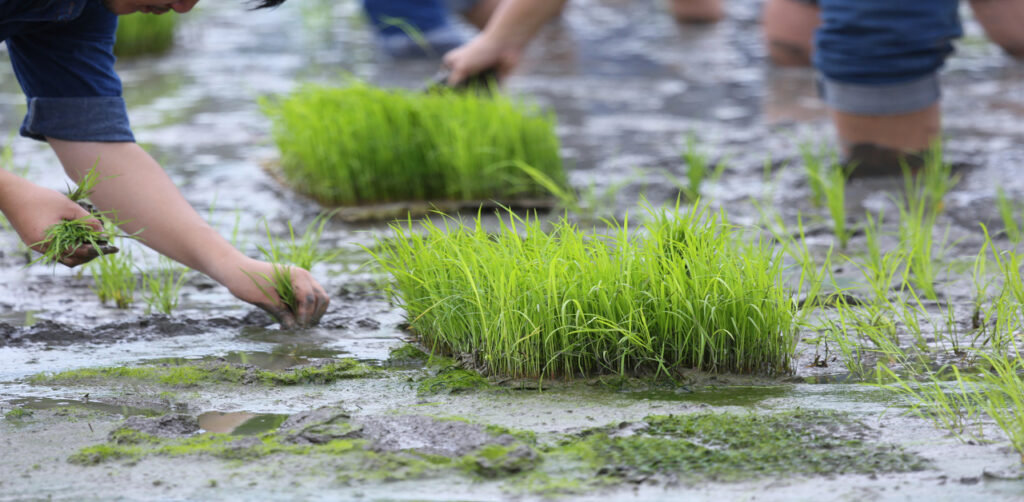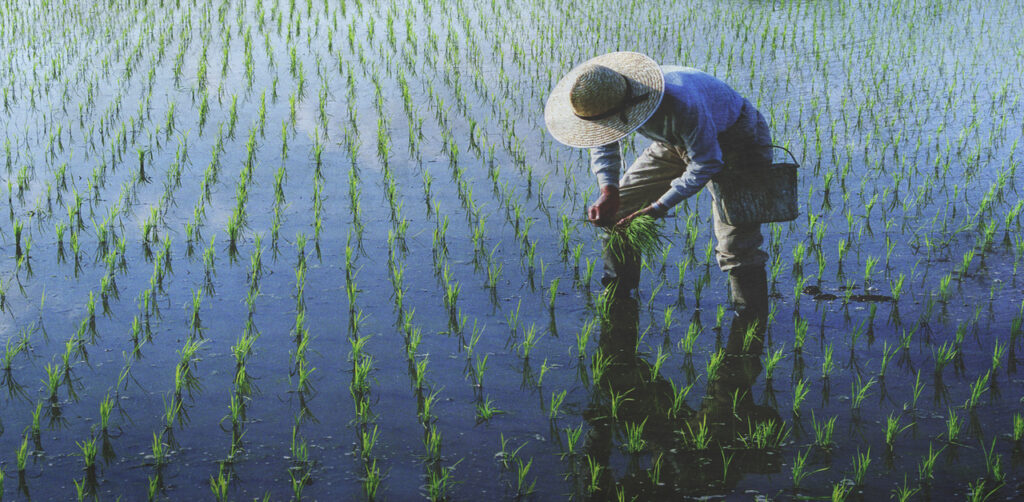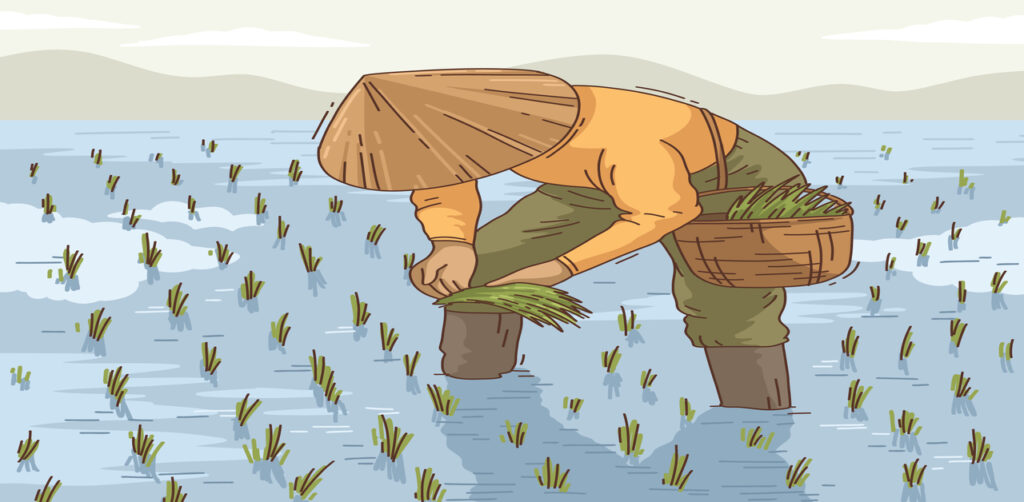System of Rice Intensification(SRI) is a new and sustainable way of rice production that aims at enhancing productivity while preserving natural resources.
In contrast to the conventional technique, which involves a lot of water, seed, and chemicals affecting farm work, the System of Rice Intensification focuses on the effective use of soil, water, and seedlings to facilitate healthier root growth and strengthen plants.
This technique was developed in Madagascar in the 1980s and is now widespread in most other countries, such as India, where it has been very successful in increasing yields, lowering the cost of inputs, and enhancing environmental sustainability.
With the adoption of scientific concepts and eco-friendly approaches, it is promising to become an effective way to satisfy the increasing world food demand, which is limited by available resources.
Over half the world population is dependent on rice as the staple food, especially in Asia, where rice is the cornerstone of food security and rural life.
Conventionally, rice has been planted in hyper-irrigated plots that involve a constant fertilization of fields by floods.
Although this technique has yielded much, it also consumes huge volumes of water, is labor-intensive, and tends to ruin the fertility of the soil.
System of Rice Intensification has been developed as a friendly, resource-efficient, and enduring method of rice planting in response to these challenges.
Table of Contents
What is the System of Rice Intensification (SRI)?
System of Rice Intensification is a new production system of rice that seeks to raise the output of the rice crop by minimizing water consumption, chemical treatments, and environmental pressure.
It is not a new type of rice or a new type of technology, but it is actually a collection of principles of crop management established in the early 1980s in Madagascar by a French Jesuit priest known as Father Henri de Laulanié.
SRI has been disseminated in Asia, Africa, and Latin America over the decades, with staggering results of bringing higher yields using less.
In India, it first started in the Tamil Nadu Agricultural University(TNAU), Coimbatore, followed by Andhra Pradesh.
- Planting after 8-10 days(in some areas 10-12 days) after nursery raising (2-3 leaf stage).
- Single seedling per hill.
- Spacing 25*25 cm( Criss cross method).
- Two-hand weeding(requires more labor).
- 1-2 weeding 10-12 DAT manually or mechanically by cono-rotary weeder. It incorporates the weeds in the soil and improves soil aeration.
- Emphasis on organic manures.
- Not flood irrigated. Only wet the field up to the vegetative stage, after that, 1-2 inches of water.
- Nursery area 250m*250m, water saving 40-60 % the conventional method.
- seed rate – 5 kg/ha.
- Eco-friendly method of Rice Cultivation because less methane gas is emitted compared to the conventional method.
SRI places much emphasis on the management of the seeds, soil, water, and nutrients so that maximum growth of the plants can be realized.
It works on developing healthier root systems, enhancing the soil condition, and developing beneficial plant-soil organism interaction.

Principles of the System of Rice Intensification(SRI) Method
The system rests on several main principles that will make it unique as compared to traditional rice farming:
1. Young Seedling Transplantation
The transplantation of very young seedlings (typically 8-12 days old) in the SRI is done in place of older seedlings (25-30 days old) that are transplanted using traditional methods.
The younger seedlings possess more potential in terms of tillering and root growth.
2. Single Seedling Per Hill
System of Rice Intensification(SRI) suggests that a single seedling be planted on the hills instead of 3-4 seedlings in clumps.
This eliminates competition amongst plants and enables the seedling to develop more strongly.
3. Wider Spacing
The planting is done on a grid with a wide distance between seedlings (25 x 25 cm or more often).
This limits congestion, offers an adequate amount of sunlight and nutrients, and enhances good growth.
4. Moist, Not Flooded Fields
A System of Rice Intensification(SRI) field, as opposed to a traditional flooded field, is maintained wet through irrigated occasionally (alternate wetting and drying).
This goes a long way to cut down the amount of water used and aerate the soil, improving the health of micro-organisms and roots.
5. Mechanical Weeding
Frequent weeding with simple equipment, such as a cono-weeder, not only suppresses weeds but also enhances soil aeration, encouraging the growth of roots and microbes.
6. Use of Organic Manures
Although chemical fertilizers may be applied, the System of Rice Intensification(SRI) highly promotes the application of organic manure, compost, or green manure to ensure that there is soil fertility and sustainability.

Advantages of System of Rice Intensification(SRI)
The amount of benefits that System of Rice Intensification(SRI) creates to farmers, the environment, and food security has made it known around the world:
1. Increased Yield
Another major benefit is that it has led to a major increase in rice.
In fact, yield increases by 20-50 percent using SRI practices are common among the farmers who report such yield increases despite no extra inputs.
2. Water Conservation
SRI can lower water consumption by 25-50 percent because constant flooding is prevented.
This renders it very appropriate in areas that experience water shortage and climatic stress.
3. Lower Input Costs
Since SRI involves fewer seeds, less water, and promotes organic production, SRI does not rely on the expensive use of chemical fertilizers and pesticides.
4. Improved Soil Fertility
Organic manures and soil aeration increase the fertility of soils through the improvement of soil structure, an increase in microbial activities, and long-term sustainability.
5. Climate Resilience
In many cases, System of Rice Intensification(SRI) plants have deeper root systems and thus they become more drought-resistant, pest and disease-resistant.
This bit of resilience is priceless in a climate change world.
6. Better livelihoods for farmers
Increased productivity and reduced production cost of inputs increases the income and less the risk to the farmers, hence economic empowerment of rural people.
If you want to buy “Oxford Student Atlas for India“, then you should visit here.
Challenges in Adoption of System of Rice Intensification(SRI) Method
Even though System of Rice Intensification(SRI) has been proven useful, it has experienced several challenges when trying to scale up:
1. Labor Requirement
First, the System of Rice Intensification(SRI) needs additional human work to plant young seedlings and mechanical weeding. This may put off farmers who have low labor supplies.
2. Knowledge and Training
The process of its implementation requires appropriate training and familiarization with the SRI principles.
Its use is not widespread due to the lack of awareness and extension services.
3. Resistance to Change
Most farmers do not fear risk and uncertainty, hence are hesitant to give up traditional practices that they have had generations of doing.
4. Policy Support
The conventional practices are being encouraged through the government policies and subsidies in some areas, which are a barrier to the adoption of SRI.

SRI is currently operating in over 60 countries all over the world, and there have been impressive success stories.
It has been widely adopted in states such as Tamil Nadu, Andhra Pradesh, Bihar, and Odisha in India. As an example, in Bihar, farmers claimed increases in yields per hectare of 2-5 tons per hectare using conventional farming to 4-5 tons per hectare using SRI.
Tamil Nadu has been in the lead in institutionalizing practices of SRI by providing programs at the state level and training farmers.
In Africa, the SRI has assisted farmers to deal with the scarcity of water, and in places such as China and Indonesia, it has served the national food security objectives.
The SRI has been identified by international institutions like the World Bank, FAO, and NGOs as a means of sustainable farming.
Environmental Significance
SRI is not only known to generate more rice, but the activity is also crucial in environmental sustainability:
1. Less Methane Emitted: A conventional flooded rice field produces a lot of Methane, which is a very strong greenhouse gas.
SRI lowers the emission of methane through the reduction of continuous flooding to mitigate climate change.
2. Biodiversity Conservation: Wet fields are better than flooded areas, which sustain the helpful soil organisms and encourage natural pest management.
3. Water Sustainability: As there is increased competition for water between agriculture, industry, and households, SRI guarantees water conservation in farming activities.
The SRI has a bright future when it is combined with the adoption of modern agricultural technologies. Transplantation and weeding can be done through mechanization to decrease the labor load.
Adoption can be further promoted through digital platforms and mobile-based training, as well as government support.
Also, the adaptation of SRI principles to other crops like wheat, sugarcane, and finger millet has already shown good results, which is an indication that it can be utilized in other crops other than rice.
If you want to read an article about Rice Cultivation, you can click on it.
Conclusion
System of Rice Intensification(SRI) is not simply an alternative way of growing rice but rather a holistic system, which represents sustainability, resilience, and empowerment of farmers.
The solution for farmers, consumers, and the environment is a win-win solution, which can be achieved by reconsidering the old methods and paying attention to the health of the plants, the soil fertility, and water efficiency.
With the world experiencing more challenges due to food insecurity, climate change, and shortages of water, it is hoped to be a ray of hope.
The principles remind us that it is not necessarily high-tech solutions that offer innovation in the agricultural sector, but in some cases, it is the redefinition of how we labor in balance with the natural world.

